Stone is our favorite material used in this project (wood and textiles are a close second). Stone possesses so many qualities that it's hard to put a finger on which appeals most. Obviously it has structural as well as architectural qualities. It also has rich textures imbued with character that likes to play with light, and it can hold heat. It's tactile, tonal and can weigh a ton; it has presence.
Laying buried, carried by a glacier or just sitting by itself, dormant for perhaps tens of thousands or millions of years, stone has a story to tell. It may have a provenance, a historical record from having already been in human hands. It's an art medium from nature; pleasing to look at, touch and feel. Be still, quiet and listen to the stone; it has a story to tell.
We are going to use two kinds of stone that we find very appealing and intriguing, and you may have thought stone was just some boring stuff rocks are made of. One is local limestone (white and gray tones) that is currently an abandoned Civil War era barn foundation that we will reclaim and reuse. The second source being considered is "Fresh Water Pearl" granite (white with black speckles) from mid-coast Maine.
The limestone was used during the barn building boom just after the Civil War due to the destruction wrought from that conflict. Local lore has it that the Union forces razed the farms in the countryside to deny the Confederacy food and provisions available in the rich farming area that is now the panhandle of West Virginia. The war was the impetuous for the mostly non-slave dependent region of Virginia (now West Virginia) to secede from the Commonwealth in order to remain loyal to the Union. The owners of the razed farms must have felt the sting in the meaning of the saying "no good deed goes unpunished".
Anyway, it gets more interesting. There were a number of decedents in the region that traced their heritage to the Hessian mercenaries employed by the British during the Revolutionary War who survived the conflict and settled in the region afterward. Of the approximately 30,000 Hessians engaged in the war, it is estimated that about 4,500 remained after the war.
Actually, the term mercenary may be a misnomer because the vast majority of these soldiers were poor unfortunates, debtors, petty criminals or simply the poor who were involuntarily pressed into service. The fees paid by the British went to the land holding aristocracy not the soldiers. The Hessian's came primarily from Alsace Lorraine and nearby German speaking regions known for their stone masons. Some immigration occurred after the war so family contact with the old country remained in tact.
Word got back to the old country from the locals about the post-war opportunities so immigrant craftsman came over to participate in the building boom. The story has it that the limestone was locally quarried and worked for use as foundations for barns and other structures by these craftsman. If you look closely you can see their tell tale marks on the stone.
Limestone is not particularly hard and is fairly workable with a chisel and set. The cut stones in the foundation still shows the craftsmanship applied so long ago. The hand fashioned corner stones showing well crafted 90 degree angles are quite exquisite and of particular appeal to us. Using local materials that do not need to be transported far, with very little energy content and are recovered or reclaimed for use in a second life gets high marks on the sustainability scorecard. As we discussed earlier, there are degrees of sustainability and trade offs arise as in the case of our decision to use granite from a favorite place of ours, far off mid-coast Maine.
My bother Brendan and wife Debbie live near Orland, Maine which is the area where Fresh Water Pearl granite comes from. They have been constructing a family retreat for a number of years and they have been using this granite which is very handsome. I'm talking about gargantuan stones, the kind Brendan likes to work with. Granite weights 163 pounds per cubic foot so it's heavy stuff. A working knowledge of geometry, physics and mechanical engineering are prerequisites when working with the size and scale of the stone he works with. He likes to say that gravity and leverage are his best helpers.
We are considering using some monolithic granite stones to provide visual interest as well as structural function for the fireplace and chimney which will be the focal point of the dwelling. We are collaborating on design ideas with him using excellent references from work he has done as well as other projects created by other stone masons. John, our builder's first trade being a stone mason, will also be rendering a design. Actually, at the level of sophistication we are striving for here, sculptor is a more appropriate and accurate description of these artisans.
Sunday, January 3, 2010
Subscribe to:
Post Comments (Atom)



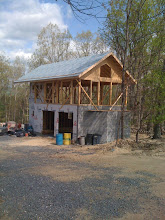

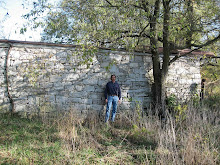
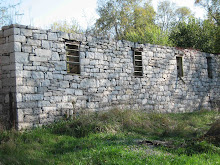





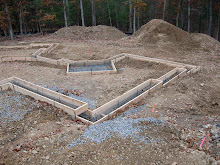

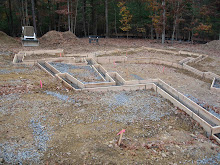
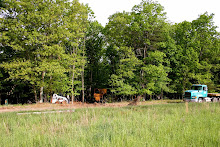
















No comments:
Post a Comment